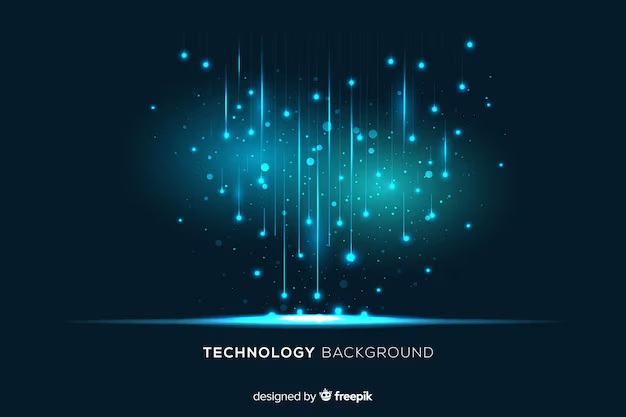In today’s rapidly advancing tech landscape, few innovations have left as indelible a mark as Atech Flash Technology. This cutting-edge technology has revolutionized the way we store and access data, influencing everything from personal devices to large-scale enterprise solutions. In this post, we’ll explore the evolution of Atech Flash Technology, its current applications, and future potential, providing insights for individuals and businesses looking to leverage this powerful tool.
Understanding Atech Flash Technology
Atech Flash Technology is more than just a data storage solution; it’s a significant advancement in how we interact with digital information. At its core, it utilizes flash memory, a type of non-volatile storage that retains data without requiring power. This technology has become integral in products like USB drives, smartphones, and SSDs, offering speed and reliability that traditional storage mediums can’t match.
The significance of Atech Flash Technology lies in its ability to provide fast data access and long-term storage. Unlike traditional hard drives, which rely on moving parts, flash technology uses electronic cells to store data. This design not only speeds up data transfer rates but also reduces the risk of mechanical failure, making devices more durable and efficient.
For modern consumers and businesses, Atech Flash Technology represents a leap forward in efficiency and convenience. From reducing boot times on computers to enabling rapid data retrieval in enterprise environments, its applications are both diverse and impactful. By understanding its capabilities, users can better harness its potential for a wide range of tasks.
The Evolution of Atech Flash Technology
The roots of Atech Flash Technology trace back to the late 20th century when the foundations of flash memory were first laid. Initially developed as an improvement over EEPROM (Electrically Erasable Programmable Read-Only Memory), the technology quickly gained traction due to its versatility and efficiency.
Over the decades, flash memory has undergone significant advancements, from the introduction of NAND flash in the 1980s to the development of Multi-Level Cell (MLC) technology. These innovations have continuously improved data density and performance, paving the way for more compact and powerful storage solutions.
Today, Atech Flash Technology stands at the forefront of digital innovation, driving advancements in everything from mobile devices to cloud solutions. The ongoing evolution of this technology promises even greater enhancements, ensuring it remains a crucial component of the digital ecosystem.
Current Applications of Atech Flash Technology
Atech Flash Technology’s versatility is evident in its widespread adoption across various industries. In consumer electronics, flash memory is a staple, powering devices like smartphones, tablets, and portable media players. Its ability to deliver high-speed data access is essential for the smooth operation of these gadgets.
In enterprise settings, Atech Flash Technology enables efficient data management, supporting everything from data centers to cloud computing. With the rise of big data, businesses rely on flash technology to handle massive datasets quickly and securely, facilitating real-time analytics and decision-making.
Beyond traditional computing, flash technology is making waves in sectors like automotive, where it’s used in navigation systems and infotainment units. Its robustness and speed are invaluable in environments that demand reliable performance under varying conditions.
Advantages and Disadvantages of Atech Flash Technology

Like any technology, Atech Flash has its strengths and weaknesses. One of its most notable advantages is speed. Flash memory provides near-instant data access, reducing load times and enhancing user experiences. Its durability is another benefit, as the lack of moving parts minimizes the risk of mechanical damage.
However, there are limitations to consider. Despite its many benefits, flash technology can be costly, especially for high-capacity storage. Additionally, while it offers long-term data retention, repeated write cycles can degrade its performance over time, necessitating careful management.
Understanding these pros and cons is vital for making informed decisions about when and how to implement Atech Flash Technology. By weighing these factors, users can optimize their use of flash memory, balancing cost and performance to meet their specific needs.
The Future of Atech Flash Technology
Looking ahead, the future of Atech Flash Technology is bright, with numerous developments on the horizon. Advances in 3D NAND technology promise to increase storage capacities while reducing costs, making flash memory more accessible to a broader audience.
In addition, emerging technologies like artificial intelligence and the Internet of Things (IoT) are poised to drive further innovation in flash technology. These fields require efficient data processing and storage solutions, highlighting the growing importance of flash memory in cutting-edge applications.
Experts predict that flash technology will continue to evolve, becoming even more integrated into our daily lives. From smart homes to autonomous vehicles, its influence will extend far beyond traditional computing, shaping the future of digital interaction.
How to Utilize Atech Flash Technology
For individuals and businesses looking to capitalize on Atech Flash Technology, practical integration is key. Start by assessing your current storage needs and identifying areas where flash memory can enhance performance and efficiency.
Consider adopting flash-based solutions like SSDs or hybrid storage systems for faster data access and improved reliability. For businesses, leveraging flash technology in data centers can optimize operations, supporting scalable and flexible infrastructure.
Engage with industry experts or consult with technology providers to explore custom solutions tailored to your specific requirements. By taking a proactive approach, you can unlock the full potential of Atech Flash Technology, driving innovation and success in your endeavors.
Conclusion
Atech Flash Technology is more than just a storage medium; it’s a catalyst for transformation in the digital age. Its impact spans industries, driving efficiency and innovation in ways that were once unimaginable. By understanding its applications, benefits, and limitations, users can make informed decisions about how to best utilize this powerful tool.


